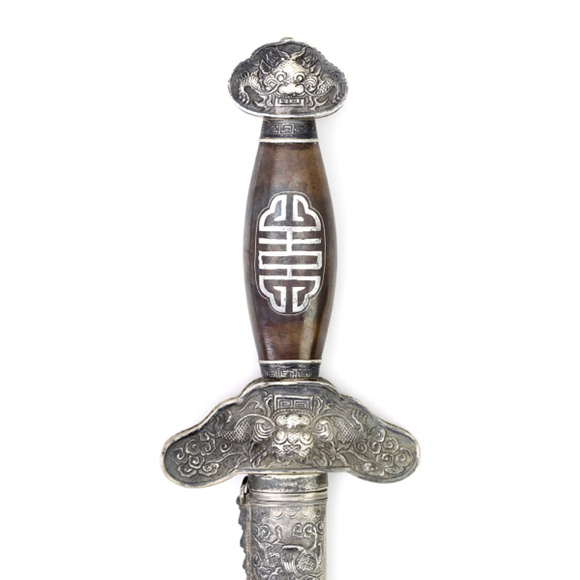A very rare ceremonial variety with copper scabbard inlaid with different alloys, and a brass blade.

Overall 78 cm
Blade 62.5 cm
Blade width 9 cm
498 grams
Nguyễn dynasty, Vietnam
Wood, pigments, lacquer
19th century
Introduction
The Vietnamese Nguyễn dynasty was deeply influenced by Ming China in terms of aesthetics, philosophy, and ceremonies. In some aspects, Nguyễn Vietnam managed to preserve older Chinese rituals that had died out in China after the Ming fell. We see these strong Ming influences among others in the design of ceremonial weapons, including two-handed straightswords and polearms that in the later period were sometimes fashioned out of wood.
This example
Here we have the head of a Vietnamese ceremonial yem nguyệt đao. This large polearm is the Vietnamese equivalent of the yǎnyuèdāo, also known as "Guan Dao" as from the Ming onwards it became strongly associated with Guan Yu, the God of War from the Chinese pantheon.
Like many Vietnamese ceremonial arms, the piece stylistically resembles yǎnyuèdāo seen on Ming artwork with its elongated profile and only very moderate curve and widening. Both elements would become more exaggerated in later Qing examples.
The blade is entirely made of wood, lacquered vermillion and painted with stylized clouds in gold paint. The blade emerges from the mouth of a dragon, Yázì (睚眦), one of the nine sons of the dragon.
Condition
Some damage at the tip, some fading of the paint. Otherwise in good condition. See photos.
Conclusion
A rare and well-made head for a Vietnamese ceremonial polearm of the Nguyễn dynasty, modeled after earlier versions of the Chinese yǎnyuèdāo (偃月刀).















Of classic shape, with a leaf-shaped blade on a socket, connected by a cast bronze base.
A what? Yes exactly. An extremely rare piece, the only example I am aware of in published collections at…






